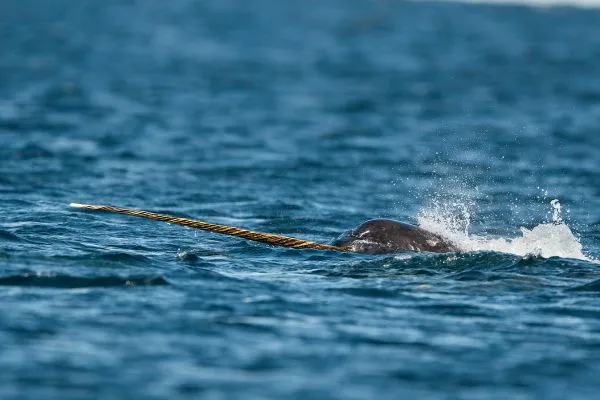We unravel the enigma behind the narwhal's extraordinary tusk.
What is a narwhal tusk?
A male narwhal only has one tooth – the upper-left canine, to be precise. But, oh, what a tooth.
Not for nothing is this Arctic whale’s scientific name Monodon monoceros, from the Greek for "one-tooth one-horn."

How long does a narwhal tusk grow?
Projecting straight forward rather than downwards from an otherwise toothless mouth, it emerges through the top lip, twisting anticlockwise as it grows. Without it, a 6m-long whale would be a 4m-long whale. No wonder narwhals’ tusks were long prized and traded as unicorn horns.
What do narwhal use their tusk for?
The fact that only the males have tusks suggests they are there for the purposes of sexual display, like a peacock’s tail, advertising a male’s quality to potential mates or rivals. But unlike peacocks’ tails, narwhals’ tusks are more than just eye-candy. They seem to have a few practical uses, too.
Males have been documented swishing them back and forth to stun fast-moving prey, for example, much like sailfish use their elongated snouts. Dotted with nerve endings, they might well have a sensory function, too – detecting sound, smell or touch, perhaps. And it’s not hard to imagine how they could make a hungry orca think twice about launching an attack. Females, though, seem to get on perfectly well without them.
Watch narwals in action. Credit: Nat Geo Wild
Want to find out more?
Check out our comprehensive guide to narwhals, as well as a guide to minke whales, blue whale facts and where to see whales around the UK.